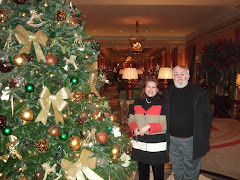That is true. Before the renaissance there wasn't such an emphasis on painting an exact likeness.
Representing likeness was undoubtedly encouraged by the new emphasis Christianity placed on the humanity of Christ and the emotional response to his image by the worshippers, as portraits represented both outward appearance and, by interpreting a sitter's expression and likeness, the soul. But there was this other belief that a beautiful outward physiognomy was a reflection of the soul and a desired appearance for a woman was to have a blonde hair, pale skin and red lips were mandatory. Such ideals are reflected in the way both religious figures, such as the Virgen Mary and classical gods and goddesses are represented in Renaissance paintings.
Beauty was equated with virtue in the Renaissance. Portraits of real men and women that emphasised their physical perfection were acknowledgements of their virtue. Conversely, ugliness and physical imperfections of all kinds were poorly tolerated and might condemn the unlucky ones to social ostracism. ill-favoured old women were sometimes identified as witches;
A victim of disease was only too easily seen as a subject for mockery and a potential source of evil to be feared.
Actually, I was also thinking of poor Anne of Cleves as well when I wrote the last post ! In the Renaissance, drawings were usually the means of capturing a likeness in the presence of the sitter. They were highly portable and were often used to send information about individuals to friends or family - their state of health and how they had altered or aged. I have now sketched a small drawing of Peter sitting on his chair which I will post as soon as I photograph it.
The veracity of painted portraits was enabled by sophisticated oil techniques developed in Northern Europe, which were taken up in this period by artists around the Mediterranean.
Subscribe to:
Post Comments (Atom)
































































.jpg)
.jpg)










































2 comments:
Hola Maria
Very interesting stuff. In this regard, could you explain something to me that I've often wondered about? One has these portraits of men and women, and of course there is the religious stuff too. Now, why is it that when we have a Madonna and child, the Madonna looks pretty enough but the Christ child looks positively ugly (at least to me)? Maybe "ugly" is the wrong word. What has happened is that the artists feel the need to give the baby an all-knowing, all-seeing look suitable for the son of God. But what they end up doing is sticking an adult face on a baby's body. Couldn't they see that this just didn't work?
Robert
Hello Maria and Robert,
I agree with Robert "Very interesting stuff" .. very informative thanks Maria, makes me want to pull some of my art books off the shelf, and gaze at some beautiful pictures.
I look at the Renaissance as rebirth of the classical knowledge.
Using the beauty of form, in art and in words, making the unmanifest manifest .. revealing the perfection in all things.
So many wonderful paintings, I love the "Procession of the Magi' by Benozzo Gozzoli in the Palazzo Medici, Florence. The 'School Of Athens' in the vatican, from Raphael is wonderful also.
If you have read any of the Letters of Marsilio Ficino .. they are a wonderful expression of the ideals of the Renaissance.
Post a Comment